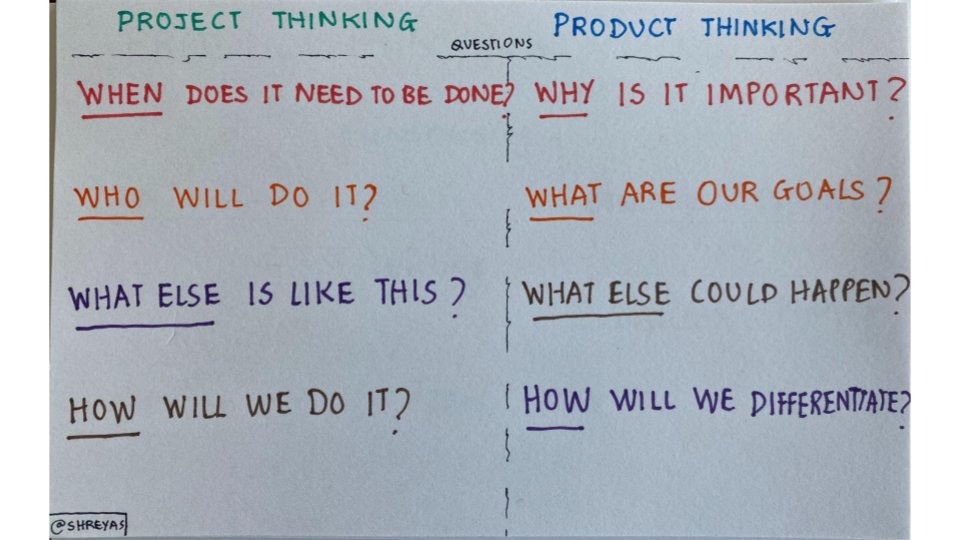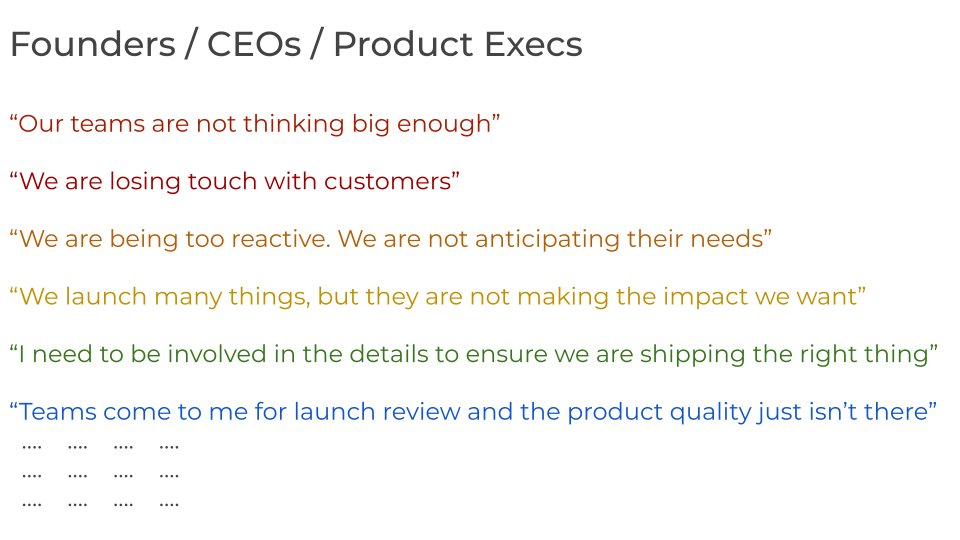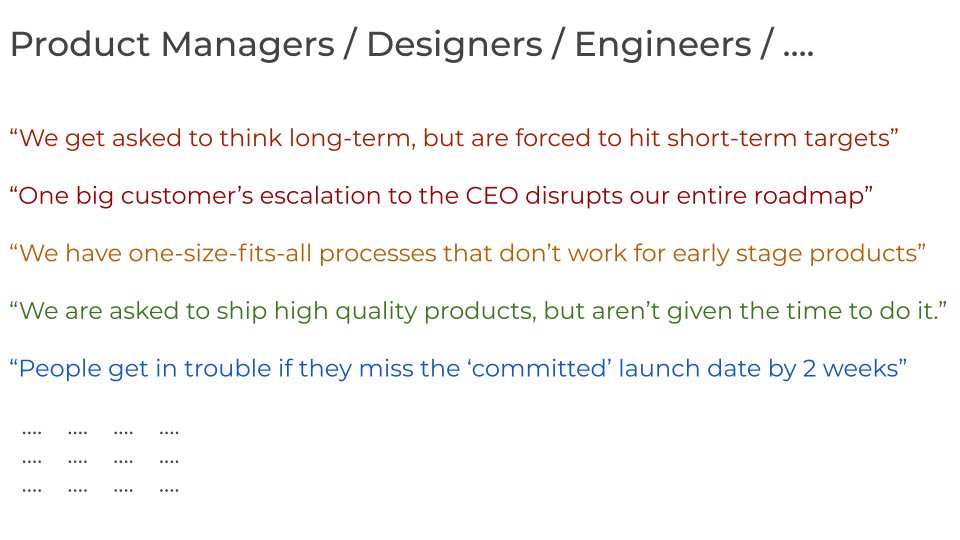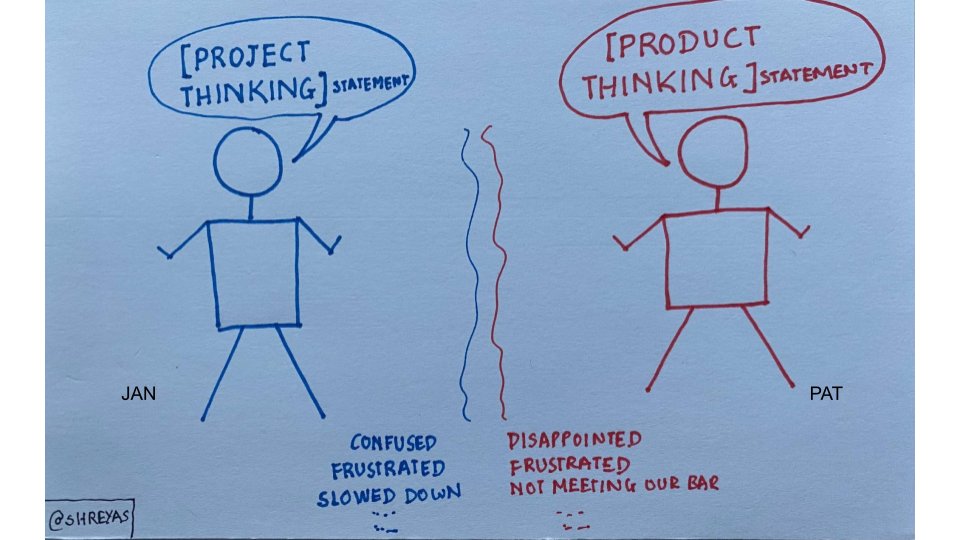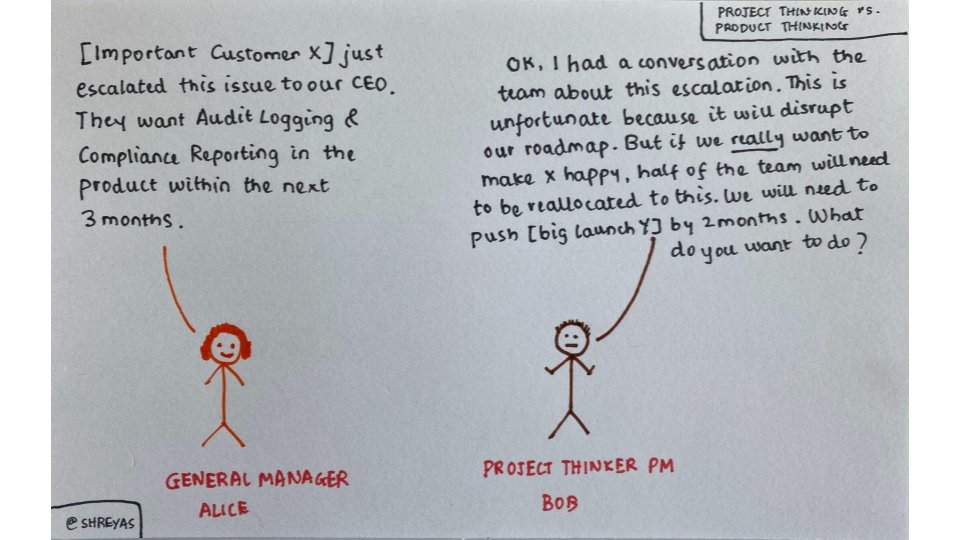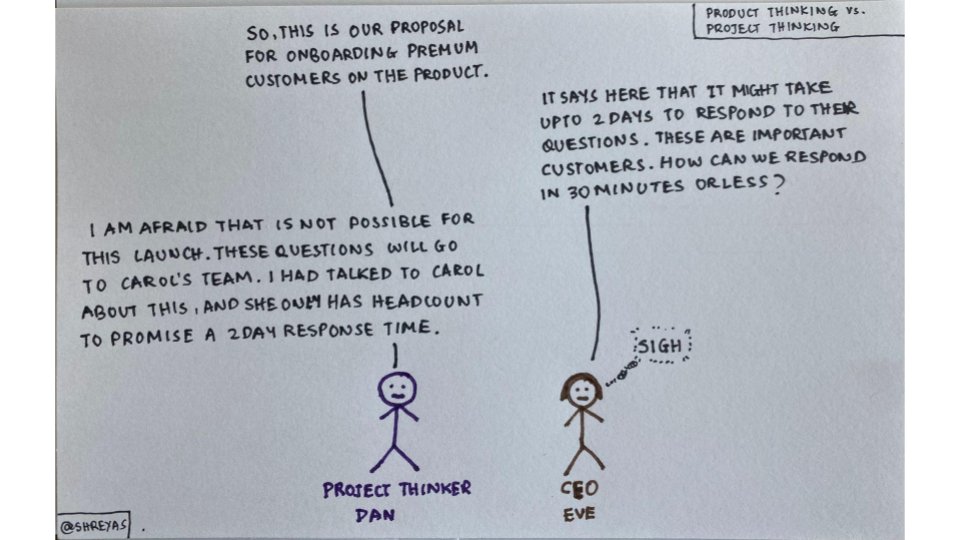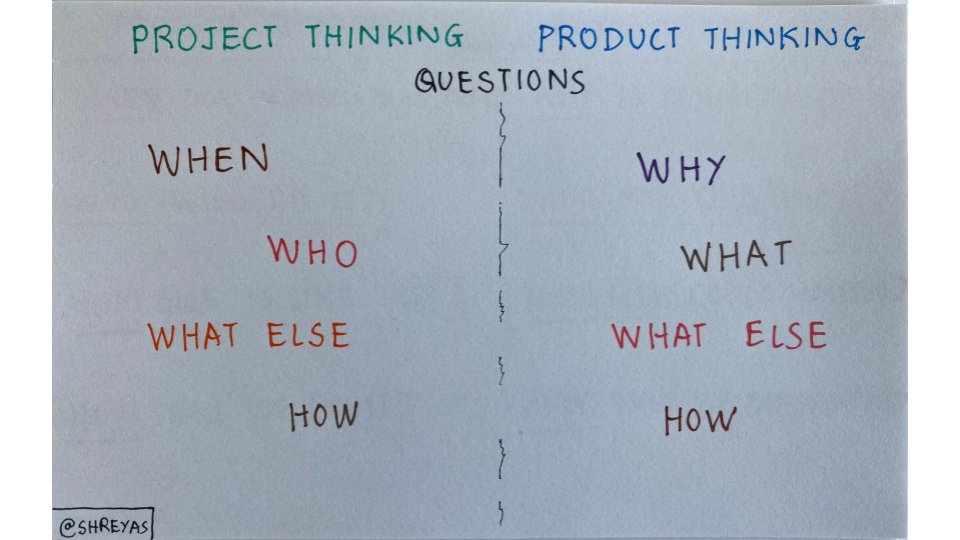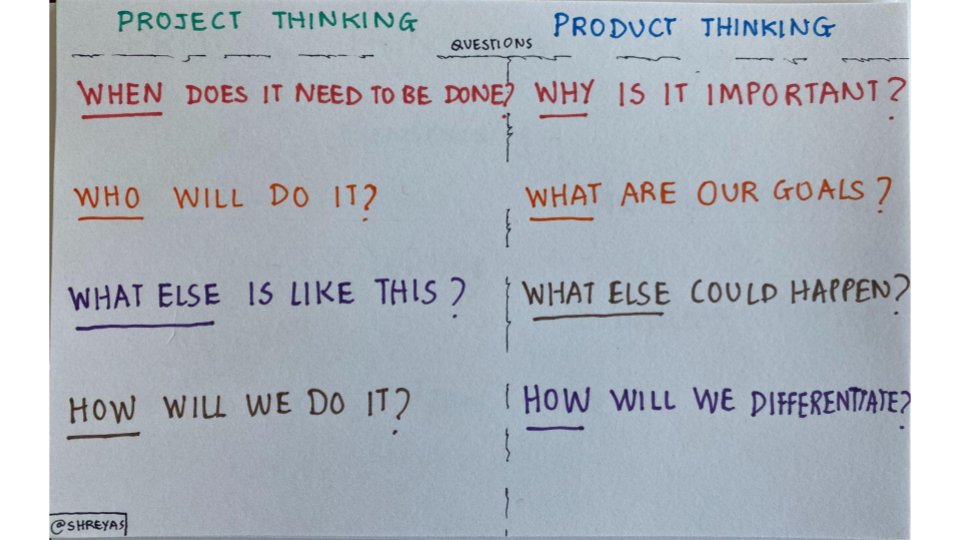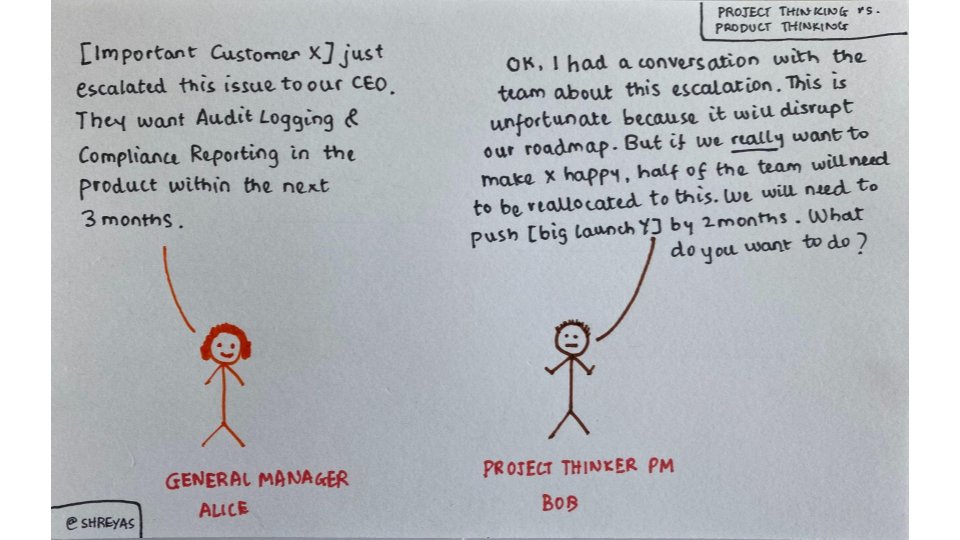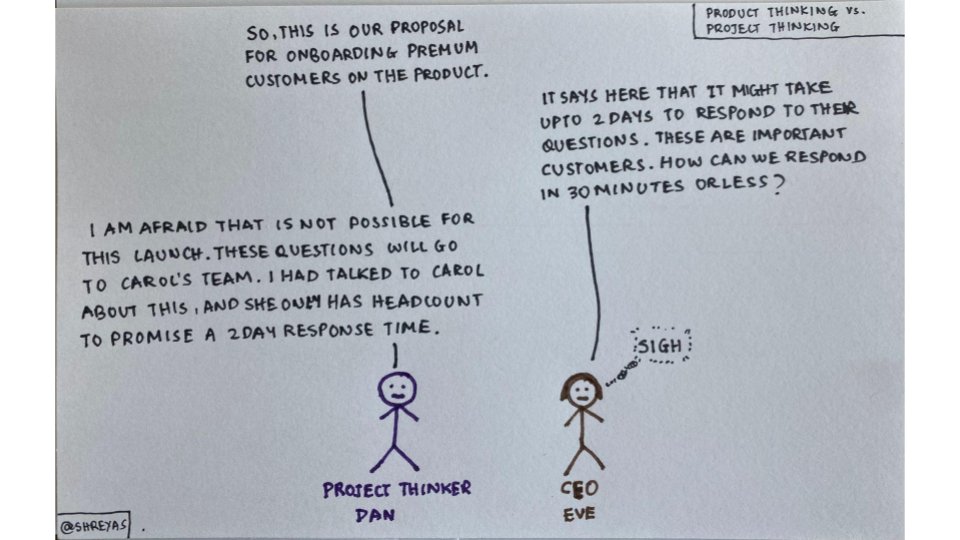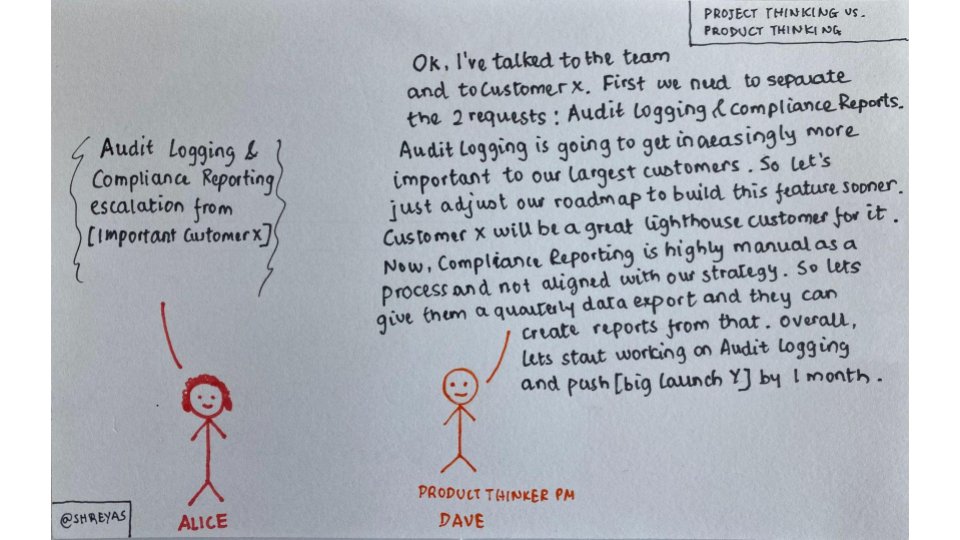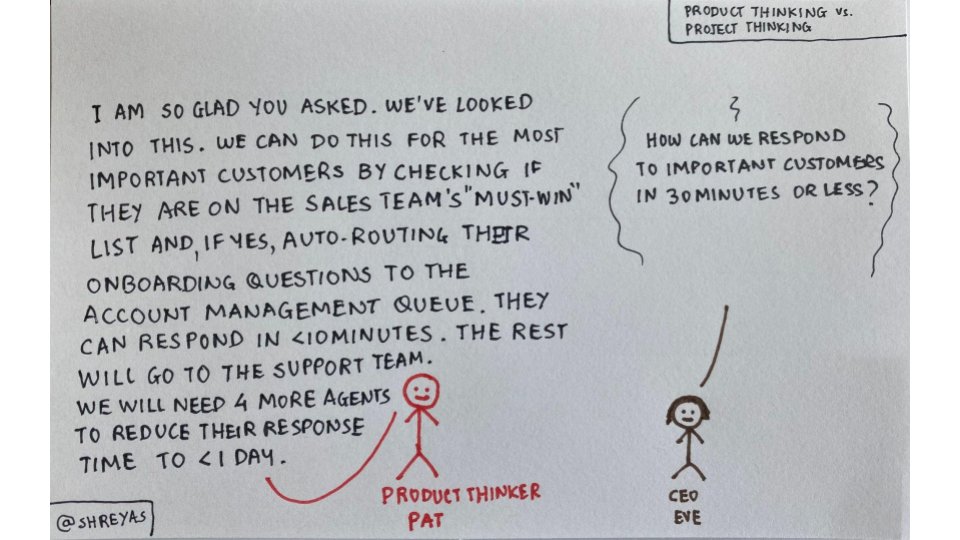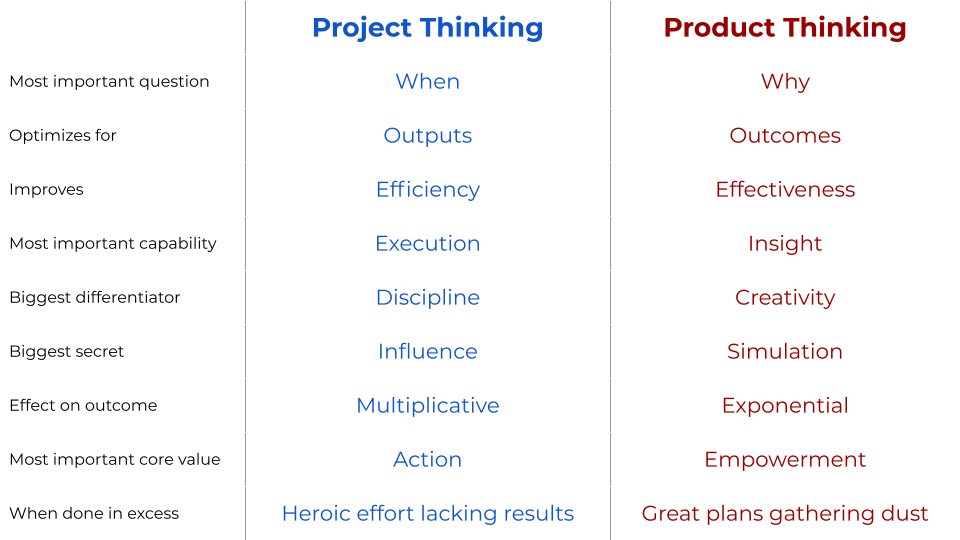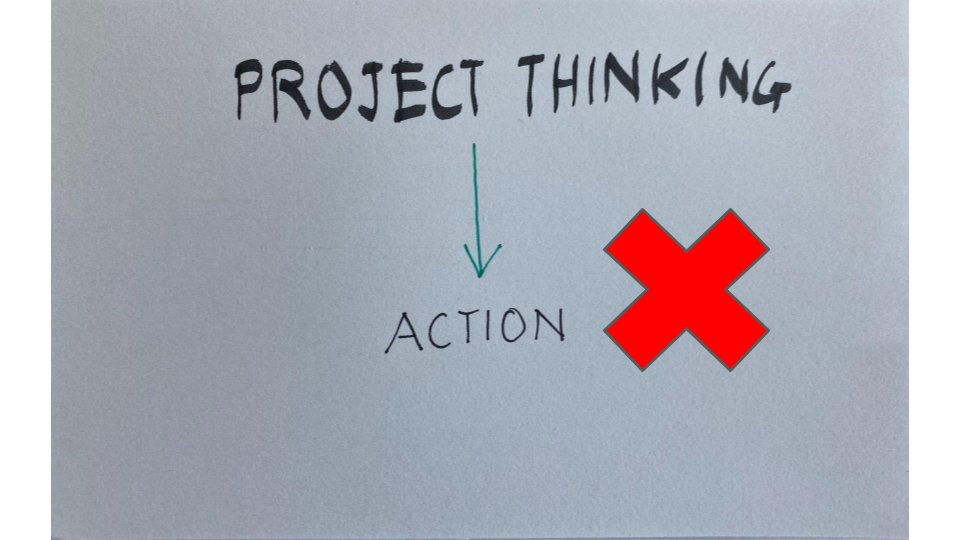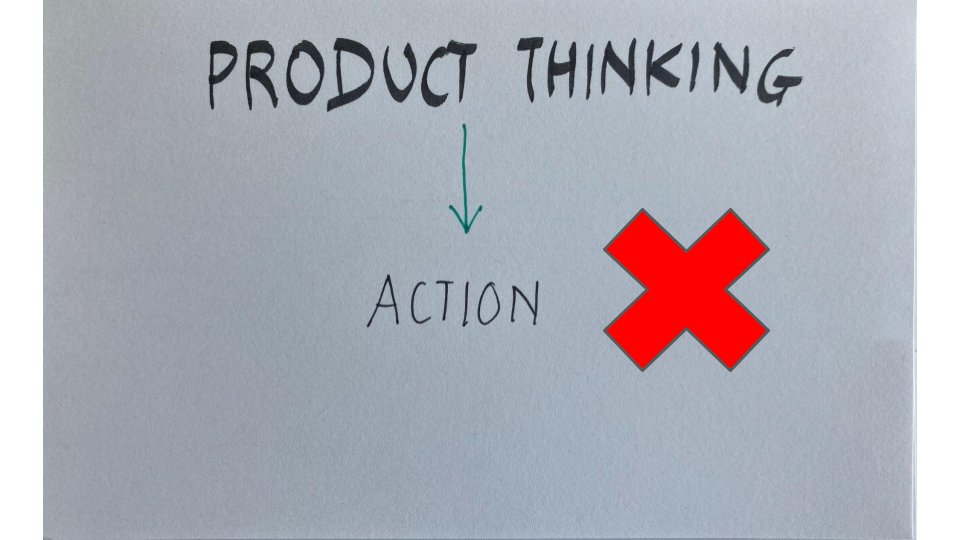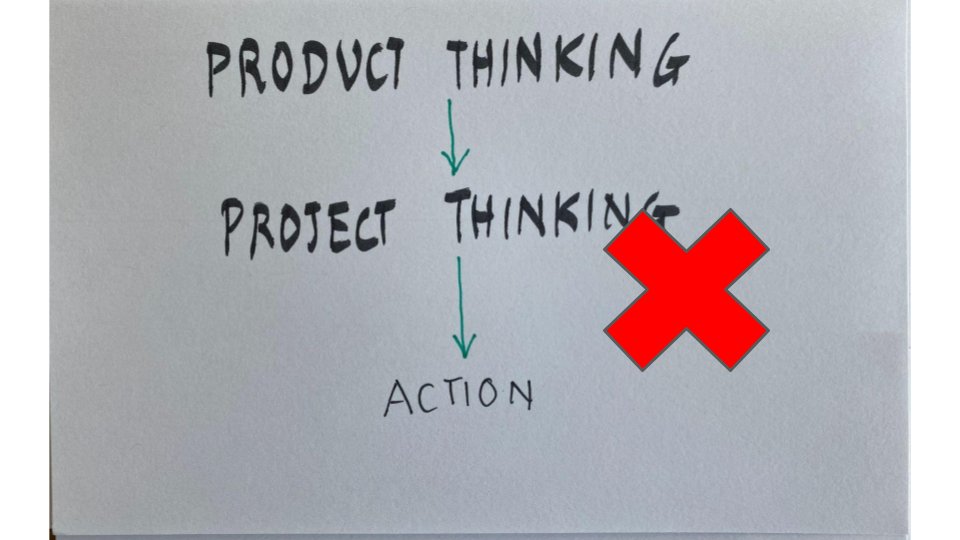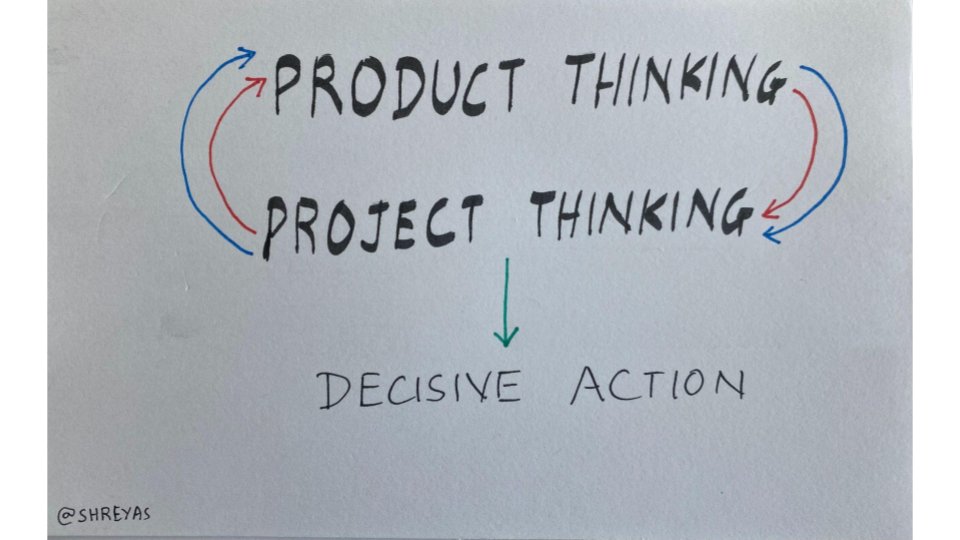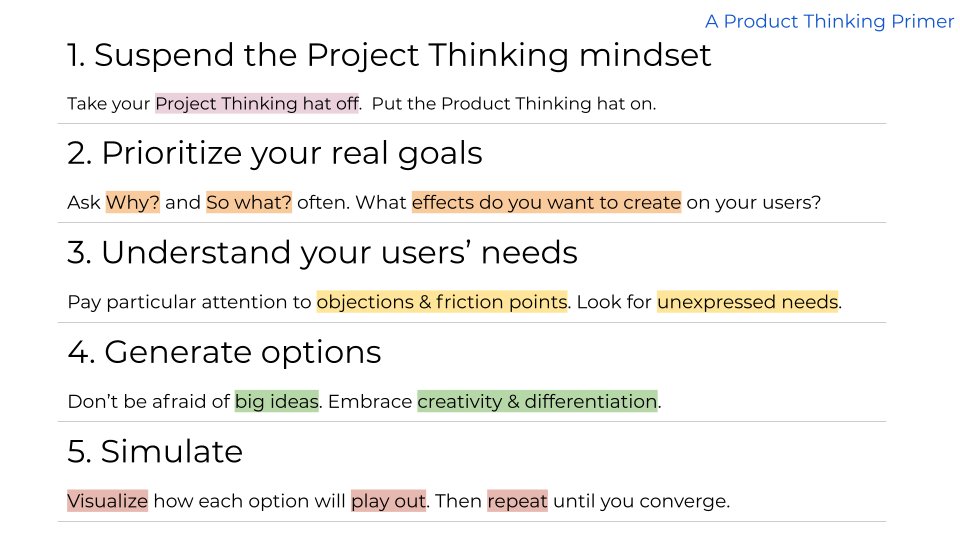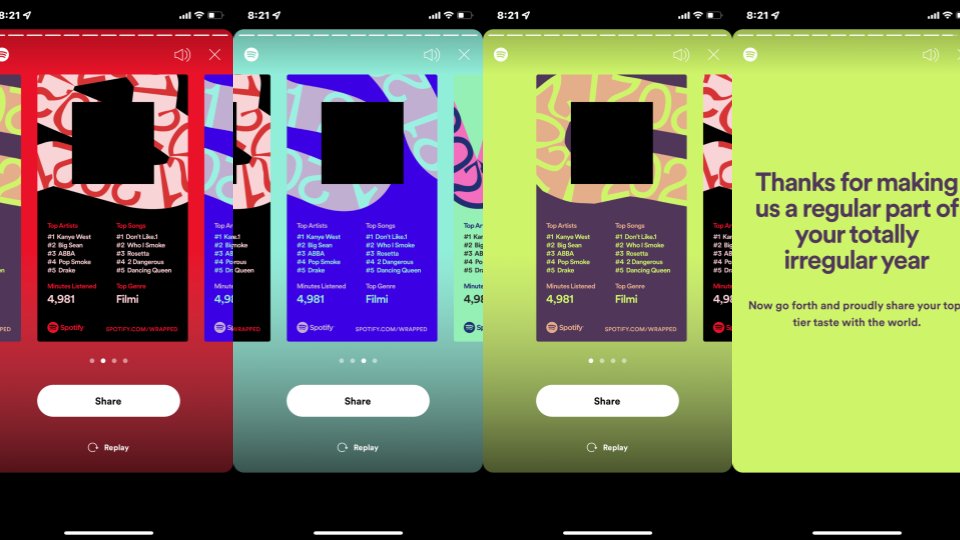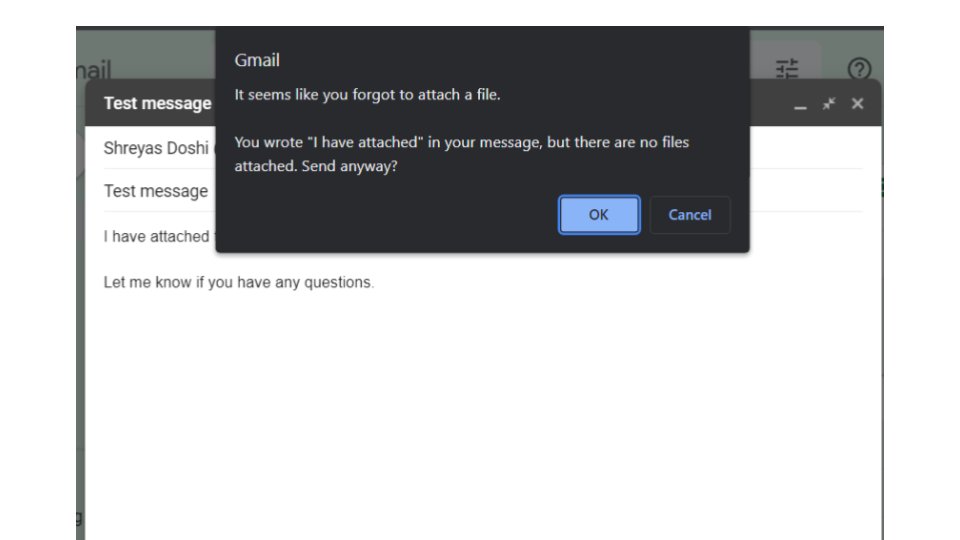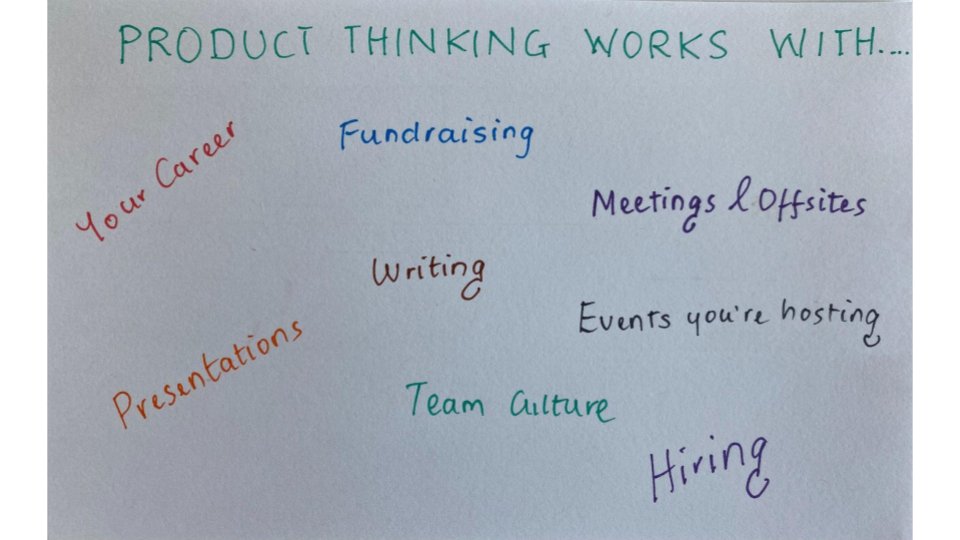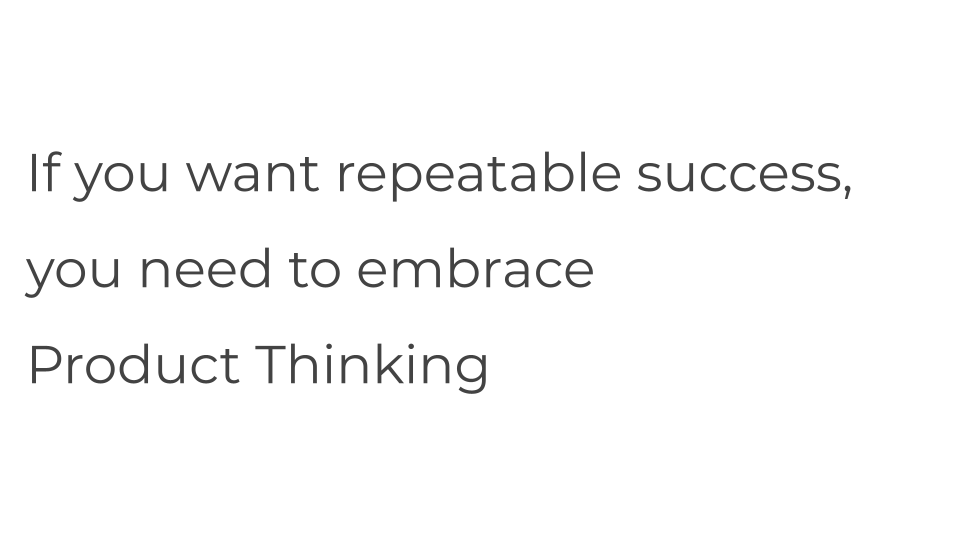As they grow in size, teams within megacorps and startups tend to implicitly bias more towards Project Thinking and not enough Product Thinking.
Product Thinking is a mindset and a process that, once you see, you cannot unsee it.
Product Thinking, Project Thinking, a thread:
Product Thinking is a mindset and a process that, once you see, you cannot unsee it.
Product Thinking, Project Thinking, a thread:
From my experience working in individual contributor & leadership roles over the past couple of decades, and from my advising work with a number of fast-growth startups, I have often seen myself and founders / CEOs / execs worry about these things:
And, having been in the trenches of product work for a large part of my career, and having managed / mentored / coached hundreds of PMs & PM Managers, I have often seen myself, and other ICs & managers worry about these things:
How is it that we all say we want the same thing i.e. to create tremendous value for our customers, to grow the company’s business and its positive impact, and yet we end up with such conflicting versions of “truth” in the throes of the inherent complexity of our work?
At least part of the answer lies in the observation that we are often speaking to each other in different languages, but are unaware of it. We litigate the minutiae of a decision, without recognizing that one of us is engaged in Product thinking & the other in Project thinking.
What is Product thinking & Project thinking?
Let’s dive deeper into that, because we cannot make much progress without first understanding these things.
And there’s no better way to start our journey than via a couple of example scenarios we see at work.
(based on real events)
Let’s dive deeper into that, because we cannot make much progress without first understanding these things.
And there’s no better way to start our journey than via a couple of example scenarios we see at work.
(based on real events)
Here, you have Alice (former PM, now General Manager) and Bob (PM, reports to Alice) discussing an escalation to the company’s CEO for 2 urgent feature requests.
Notice Bob’s response here.
It is a fairly common response in such situations & it is classic Project Thinking.
Notice Bob’s response here.
It is a fairly common response in such situations & it is classic Project Thinking.
Let’s take another scenario.
Here, you have Dan (PM) at a product review meeting with Eve (CEO).
Notice how Eve asks a question that’s focused on the customer experience, and how Dan’s response is about resources, launch scope, SLAs.
Classic Project Thinking again.
Here, you have Dan (PM) at a product review meeting with Eve (CEO).
Notice how Eve asks a question that’s focused on the customer experience, and how Dan’s response is about resources, launch scope, SLAs.
Classic Project Thinking again.
Having seen some examples of Project Thinking, let’s explore more formally how Project Thinking & Product Thinking differ.
And there’s no better place to start here than to look at the types of questions that interest us when we are doing Project Thinking vs. Product Thinking.
And there’s no better place to start here than to look at the types of questions that interest us when we are doing Project Thinking vs. Product Thinking.
Notice how “When” and “Who” are top of mind during Project Thinking, whereas “Why” and “What” are top of mind during Product Thinking. In both modes of thinking, we ask “What else” and “How”, but the actual questions asked differ depending on which mode we are in.
The difference in what these questions are seeking (and what answers they will elicit) is really the essence of the difference between the Project Thinking mode and the Product Thinking mode:
With this foundation, we are now ready to more formally define Product Thinking and Project Thinking.
Project Thinking:
Project Thinking is about understanding expectations, formulating plans, marshaling resources, and coordinating actions to meet those expectations.
Project Thinking is about understanding expectations, formulating plans, marshaling resources, and coordinating actions to meet those expectations.
Product Thinking:
Product Thinking is about understanding motivations, conceiving solutions, simulating their effects, and picking a path based on the effects you want to create.
Product Thinking is about understanding motivations, conceiving solutions, simulating their effects, and picking a path based on the effects you want to create.
Let’s now look at the two scenarios we saw earlier, and see how those conversations might go if the PM had applied more Product Thinking instead of solely applying Project Thinking.
As a reminder, this is what these scenarios looked like with Project Thinking:
As a reminder, this is what these scenarios looked like with Project Thinking:
Here, when PM Dave is applying Product Thinking, the response to Alice’s question is a lot more nuanced. It turns out that one of the feature requests is actually quite strategically aligned and Dave recommends just building it. For the other request, Dave recommends a workaround
Not just that.
Whereas Project Thinker Bob saw this situation as a crisis, Product Thinker Dave has turned this crisis into an opportunity. He can see how valuable it will be for his company if Customer X can be a key “lighthouse customer” for the new Audit Logging feature.
Whereas Project Thinker Bob saw this situation as a crisis, Product Thinker Dave has turned this crisis into an opportunity. He can see how valuable it will be for his company if Customer X can be a key “lighthouse customer” for the new Audit Logging feature.
Let’s now look at the second scenario. Here, Product Thinker Pat knows that a 2 day response time would be less than ideal and they had proactively identified a creative solution to reduce the response time to <10 minutes for a subset of these VIP customers.
By using the Product Thinking mode in this situation, Pat is able to see beyond the immediate resourcing constraints that the Support team faces, and presents much clearer trade-offs to CEO Eve: “We can create a better experience with creativity, and such-and-such investment.”
There is indeed a pretty wide contrast between the conversations (and often outcomes) when we are in Project Thinking mode vs. when we are in Product Thinking mode.
Here’s a cheat sheet that can help us better understand how these modes differ and in what ways they are valuable:
Here’s a cheat sheet that can help us better understand how these modes differ and in what ways they are valuable:
Before you proceed, I would encourage you to review that cheat sheet one more time, and evaluate how these distinctions might apply to your work, and, if you lead a team or a company, to the work that your team does.
You are probably now asking: how can I apply Project Thinking and Product Thinking in my work?
For any non-trivial project, the right answer isn’t this:
For any non-trivial project, the right answer isn’t this:
The right answer for any sufficiently complex product endeavor is usually this. Time & time again, I& #39;ve found it useful to start with the Product Thinking hat, arrive at a differentiated, creative solution, assess its feasibility with my Project Thinking hat & iterate a few times
At the end of this process, you will have much greater clarity on the ultimate solution & the steps you need to take towards making this ultimate solution a reality, taking into account the constraints you face today & ones you might face tomorrow.
That enables decisive action.
That enables decisive action.
Before we proceed, I want to reemphasize one thing: Product Thinking is not better than Project Thinking. For a team to succeed consistently, it needs to be able to do both Product Thinking & Project Thinking very well. Some of us will be better at one than the other. That’s okay
Because in reality, you can learn Product Thinking, and you can also teach your team the discipline of Product Thinking. To succeed, we need not all be world class Product Thinkers. But it helps if people can recognize these two modes, so they can communicate & decide better.
This thread is getting long, so I will now leave you with a primer to improve your own Product Thinking and team others about it.
Having known and talked to many capable Product Thinkers over the years, here’s how Product Thinking breaks down:
1. Suspend the Project Thinking mindset
2. Prioritize your real goals
3. Understand your users& #39; needs
4. Generate options
5. Simulate
1. Suspend the Project Thinking mindset
2. Prioritize your real goals
3. Understand your users& #39; needs
4. Generate options
5. Simulate
Note how each of these steps is fairly straightforward (perhaps even obvious). Despite that, the problem I see time and time again is that we don’t really give ourselves the chance to systematically perform these steps.
We are in a hurry, or we think we already know. Oftentimes, that’s the real enemy of Product Thinking. And remember that each of these steps involves great skill – Product Sense being the key skill that we can utilize to put Product Thinking in practice. https://blog.tryexponent.com/improve-your-product-sense/">https://blog.tryexponent.com/improve-y...
Let’s now look at some examples of products & features that I think demonstrate the essence of the steps we looked at.
I think Spotify Wrapped is a great example of Product Thinking. The team at Spotify probably had a 1000 reasons not to build such an engaging recap experience (like, we have bugs to bash, dozens of feature requests & we’re building a "silly" recap feature, used once-in-a-year?)
Another good example is the Gmail “did you forget to attach the file” feature. This feature has saved me from embarrassment 100s of times over the years, and without fully exploring the option space, they wouldn’t have been able to build it as delightfully as they have done it.
Another example is this screen in @usehonk (h/t @round). The attention to detail, the insight that anytime we are asked to sign something, we are wired to pay close attention to what we are signing, and the simulation of the effects that will have on the user are all admirable.
To end this thread, I will leave you with two things.
First, for fun, watch this short clip from Avengers: Infinity War
First, for fun, watch this short clip from Avengers: Infinity War
As I said earlier, Simulation is the biggest secret of Product Thinking. If you can do better simulations, and you can hire/encourage certain people on your team to simulate, trust me, you will be able to do things that look like magic to the uninitiated. Just like Doctor Strange
Lastly, once you are adept at Product Thinking, you& #39;ll be able to apply it to many things beyond just building products. Ultimately, Product Thinking is about a systematic evaluation of your real goals, the effects you want to create, and exploration of how to create said effects
That’s all for today. I am not the first person to talk about Product Thinking (and pretty sure I won’t be the last), but I hope this thread is useful in helping you create better products, better experiences, greater impact, and wiser teams.
I wish you all the very best!
I wish you all the very best!
If you& #39;re looking for more, check out / bookmark this 1+ hour Twitter Spaces Q&A on the topic of Product Thinking & Project Thinking. Many thanks to @michael for help with moderating the session. https://twitter.com/i/spaces/1YqGopbwAwAJv">https://twitter.com/i/spaces/...
For even more weekend listening, check out / bookmark this 1+ hour Q&A on Product Sense, which is an essential skill for Product Thinking. Many thanks to @sabakarimm for help with moderating this session. https://twitter.com/i/spaces/1YqxopbzLkQKv?s=20">https://twitter.com/i/spaces/...

 Read on Twitter
Read on Twitter